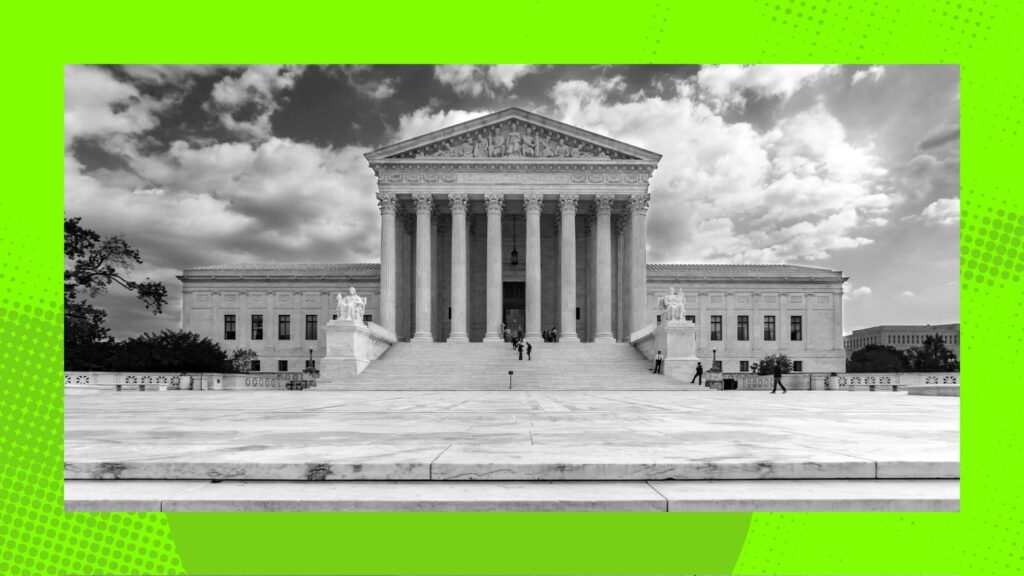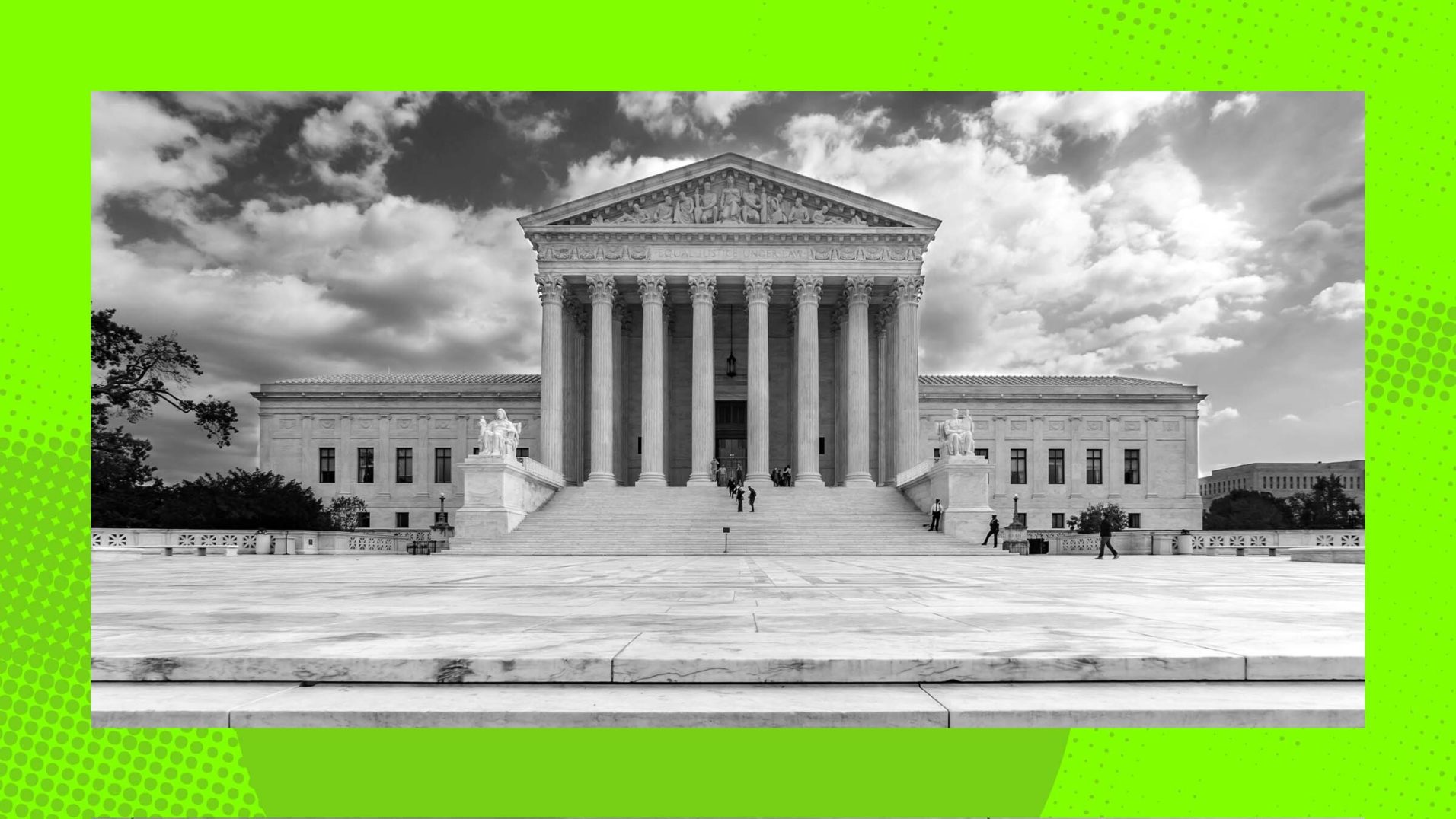Labor lawyers belong on the Supreme Court
Say It Louder

Jenny Hunter is a labor lawyer, consultant, and writer whose work has been published in Slate, The Washington Post, and OnLabor.
On your average Tuesday on which the Supreme Court considers taking away the fundamental rights of millions, you can expect at least one justice to offer a full-throated defense of those rights. But last month, when the Court heard oral argument in Glacier Northwest, Inc. v. International Brotherhood of Teamsters Local Union 174, a case that could determine if workers retain a meaningful right to strike, there was no such powerful plea. Instead, the liberal justices seemed focused on finding an off-ramp to prevent a disastrous result—a righteous goal, sure, but one that resulted in no discussion of the importance of the right at stake. The Glacier Northwest argument was a wheezing canary in the coal mine of a federal judiciary in which there are almost no judges with backgrounds in union-side labor law.
For nearly a century, federal law has protected workers’ right to strike. Strikes are workers’ most powerful economic weapon; by withholding their labor, they can pressure employers to agree to a fair contract. The right to strike is not important only to workers who are in unions, but to all workers: If unionized workers lose their leverage to demand better pay and working conditions, non-union employers will gladly match those lower standards.
Read the story on Balls & Strikes
You probably won’t get any student loan relief, thanks to SCOTUS
Speaking Of…

If you were hoping that your student loans would be forgiven under a program that President Joe Biden announced last summer, you should, unfortunately, make other plans.
On Tuesday, the Supreme Court heard oral arguments in two cases, Biden v. Nebraska and Department of Education v. Brown, that ask the Court to strike down the student loan relief program. That program would provide $10,000 in relief to most borrowers who earned less than $125,000 a year during the pandemic, and $20,000 in relief to borrowers who received Pell Grants.
The Brown case is laughably weak, and no justice appeared to believe that federal courts have jurisdiction to hear this case. But the Supreme Court only to needs to assert jurisdiction over one of these two cases to kill the loan relief program, and the Court appeared likely to split along party lines in the Nebraska case. Though there is an off chance that Justice Brett Kavanaugh or Amy Coney Barrett might break from their fellow Republican appointees, all six of the GOP-appointed justices appeared inclined to kill the program.
And even if the Biden administration did convince Kavanaugh or Barrett to vote in their favor, that would not be enough. The administration would need both of their votes to prevail.
Read the story on Vox
The story of the ultra-conservative judge who could kill the abortion pill
Less of This

Matthew Kacsmaryk was a 22-year-old law student when he drove to a small city in west Texas to spend a day with a baby he would probably never see again.
He was in Abilene to support his sister, who, pregnant at 17, had fled to a faraway maternity home to avoid the scorn she feared from their Christian community. But holding his nephew in his arms — then leaving the baby with adoptive parents — also solidified Kacsmaryk’s belief that every pregnancy should be treasured, his sister recalled, even those that don’t fit neatly into a family’s future plans.
Almost sixteen years later, in 2016, Kacsmaryk drove back to Abilene for his first meeting as a board member of Christian Homes and Family Services, the organization that had taken in his sister when she chose adoption over abortion.
“He’s very passionate about the fact that you can’t preach pro-life and do nothing,” said Kacsmaryk’s sister, Jennifer Griffith. “We both hold the stance of you have to do something. You can’t not.”
Now 45 and a federal judge, Kacsmaryk (kaz-MARE-ik) has the opportunity to impose the most far-reaching limit on abortion access since the Supreme Court overturned Roe v. Wade in June.
Read the story on Washington Post
The conservative legal strategy to declare the federal government unconstitutional
Less of This Too

Earlier this month, Texas’s Republican Attorney General Ken Paxton filed a lawsuit claiming that the $1.7 trillion spending law that keeps most of the federal government — including the US military — operating through September of 2023 is unconstitutional.
Paxton’s claims in Texas v. Garland, which turn on the fact that many of the lawmakers who voted for the bill voted by proxy, should fail. They are at odds with the Constitution’s explicit text. And a bipartisan panel of a powerful federal appeals court in Washington, DC, already rejected a similar lawsuit in 2021.
Realistically, this lawsuit is unlikely to prevail even in the current, highly conservative Supreme Court. Declaring a law that funds most of the federal government unconstitutional would be an extraordinary act, especially given the very strong legal arguments against Paxton’s position.
But the case is a window into Paxton’s broader litigation strategy, where he frequently raises weak legal arguments undercutting federal policies before right-wing judges that he has personally chosen because of their ideology.
Read the story on Vox









